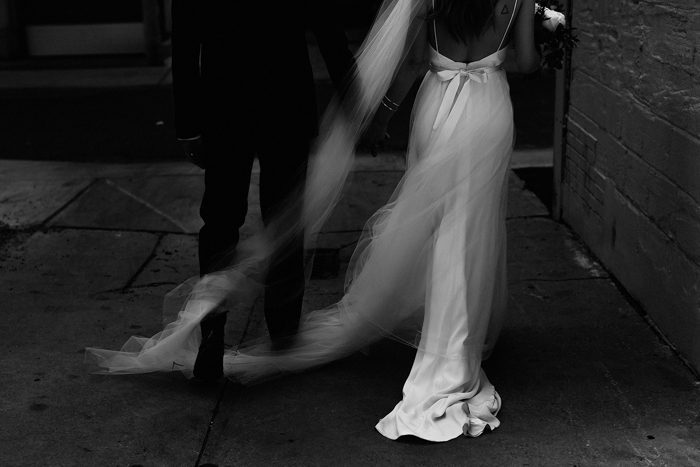
Image by Bows & Lavender
For a wedding photographer, there’s no joy like getting your wedding submission accepted. Receiving a yes that you worked so hard for, no matter how long it takes, does wonders for both your confidence and your reputation. In fact, it’s almost as satisfying as securing your first booking.
If you want to keep growing your business, getting your work published is a good way to start. Wedding publications can shine a light on your work, and in return, you’ll get to show your unique approach to telling a couple’s story. And eventually, hopefully, the exposure will send new clients your way.
But even with all those perks, submitting your work can be intimidating. There are publication guidelines to follow, client permissions to secure, and lots of unanswered questions–like how many photos should you submit? What are blogs looking for right now? If you’ve ever asked yourself these questions, you’re right at home with photographers facing the same dilemma.
Luckily, we know a thing or two about getting approved. And you may be surprised that the make-or-break requirements aren’t that extensive. So, are you ready to let the world see your amazing art? Keep scrolling to discover what makes publications take a second look at a photographer’s work.

Image by Damian Milan
Submission Tips For Getting Your Work Published
1. Tells A Visual Story
Telling a strong visual story that focuses on human connection is huge. Most publications are looking for the emotion behind a wedding day. It is one of the best days of a couple’s life, so chances are there are going to be touching moments of togetherness. Whether this is in the form of tears, loving embraces, or pure joy, these candid moments of happiness allow the publication’s readers to get an insight into how everyone was feeling during the wedding.
2. Different Wedding Styles
While there are some publications that stick to a specific style, many publications are looking to show off as many styles as possible–especially couples that combine styles that usually wouldn’t go together. Details like this will help inspire readers and help them find inspiration for their own big days.
3. Unique Details
Because publications are receiving hundreds of submissions, there’s a good chance that they’ve seen a lot of weddings that are very similar. Although there is nothing wrong with this, having standout details (such as florals, attire, DIY projects, etc.) and moments (such as a unique unity ceremony or one-of-a-kind first look) can help improve your chances of being featured.
It’s important to note that there’s a connotation that the weddings that are accepted are over the top and expensive. This isn’t always the case. What’s most important about these standout details is that they’re personalized to the couple and their relationship. For example, if the pair loves to play Scrabble in their free time and they have a Scrabble-themed seating chart, that’s an element that’s not often done. Just as there are trendsetters in fashion, there are also trendsetters in the wedding world.
4. The Photos Should be Pinnable
Pinnable photos are a must for many online publications, as Pinterest is typically one of the top traffic referrals. Featuring content that will get repinned on Pinterest is key to a blog post’s success. Photos that do well on the social media platform are usually vertical (portrait-oriented) and provide utility to couples planning their wedding (think decor shots, full-length shots of dresses, etc.).
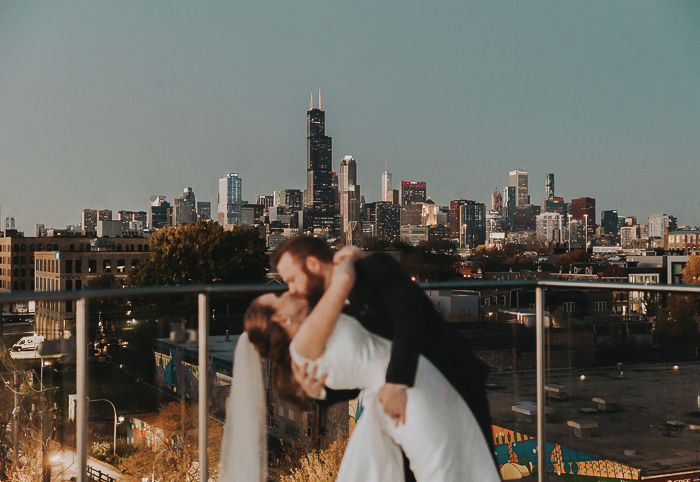
Image by Mariscal Photography
Common Mistakes To Avoid When Submitting
5. Too Many Group Photos
While there’s nothing wrong with submitting photos of the family and wedding party, photographers sometimes include too many. Most publications like to share a timeline of the day, and while group photos are important to this timeline, a small handful is plenty.
6. Number of Photos
Every publication is different in the number of photos they request, so it’s important to look at each one individually. However, they give you a number of photos to include for a reason. Having too few or too many images can make it hard for an editor to understand the big picture of the day. It also potentially delays a feature if an editor has to reach out to ask for more photos.
7. Not Enough Diversity
Diversity is extremely important in submissions. Junebug Weddings, for example, strives to be as inclusive as possible. And unfortunately, not many LGBTQ+ weddings are submitted. The more BIPOC and LGBTQ+ weddings the better!
8. Styled Shoots Details
Chances are that couples who are planning their weddings have no idea what a styled shoot is. When they see the photos, they most likely assume that it’s a real wedding. That’s why treating styled shoots as you would a regular wedding as a photographer is important. One of the biggest mistakes photographers make is forgetting to include a “ceremony.” Even if it’s just a few of photos of the couple in a ceremony-like pose, this helps readers envision what a ceremony may look like for themselves.
Because of this, it’s also important that styled shoots include two individuals. Weddings are between a couple, and a shoot with one singular person or multiple couples can be confusing for the audience.
9. Forgetting Vendor Credits
We understand that submitting to publications can feel time-consuming–especially when you’re busy shooting weddings. However, it’s important to do the homework to gather all of the vendor credits. Publications want to list every vendor involved to ensure they get the credit where credit is due. It also helps prevent editors from having to go in after the feature date to add them later on. There’s nothing more frustrating than having your work not credited when the maximum number of eyes is on it once it goes live.
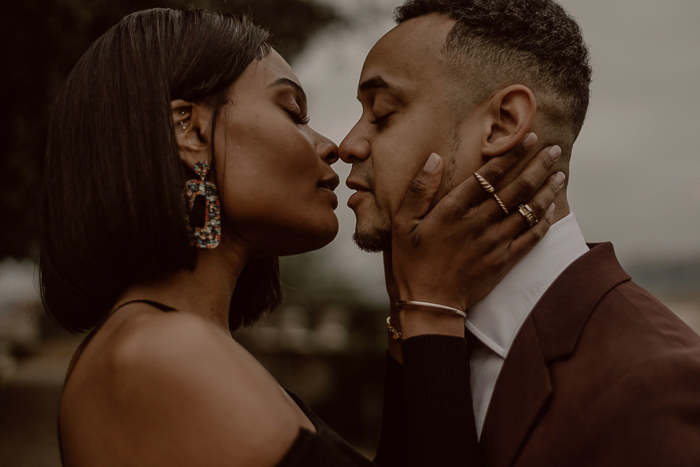
Image by Rita Foldi
10. Submitting Weddings That Are Similar To Those Already Featured
It may be appealing to submit work that is very similar to weddings that you already see on blogs. But in reality, most publications what to share content that’s new and exciting. As a photographer, we’d guess that you’ve seen quite a few wedding trends. And if you’ve seen it all over the place, chances are publications have too. We’re not saying you have to scour every publication to ensure that the wedding is different. One quick Instagram feed scroll will help you gain an idea of whether or not it’s too similar to other features.
11. Gallery Isn’t In Chronological Order
In order for a publication to get a big-picture understanding of a wedding, organize your submission gallery in chronological order. This typically looks like detail shots (invitation suites, rings, etc.), getting ready portraits, first look, ceremony details, ceremony, couple portraits, reception details, reception, grand exit.
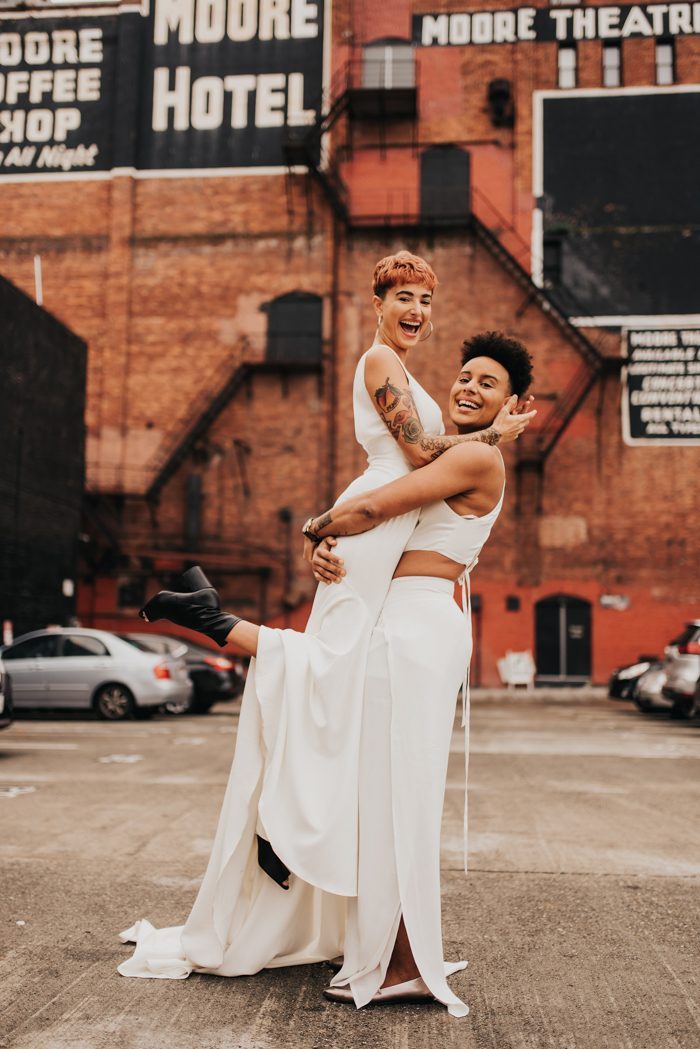
Image by Baylee Dennis Photography
Is There Anything Else You Can Do To Stand Out?
12. Give Insight About The Day
Although this is yet another element that varies amongst the publications, sharing what excites you about the wedding can help the editor understand what is unique about it. Whether this is just a special detail, funny moment, or heartwarming event, getting the behind-the-scenes reason why you’re passionate about a wedding helps an author feel passionate about it too.
13. Be Nice
Being nice goes a long way. And it can be easy to forget that there are human beings on the other end of an email. Whether you’re checking in on the status of a publication or a specific wedding was rejected and you’d like to know why, sending a polite email can make a world of a difference. And who knows–an editor may even be more inclined to check out your other work and find another wedding that’s a better fit.
Other Things To Note
14. Make Sure You Have Rights To The Images
It’s extremely important to gain the right to publish the images. While many photographers have it in noted in their contract that they have all rights to the photos to share, if this is not something you include, it’s important to ask your client if it’s something they are comfortable with. Some couples don’t approve of being featured, and it’s always sad for a publication to toss out a feature after it’s already been approved.
15. Don’t Be Afraid
We know that submitting your work can be intimidating. But you can’t be published if you don’t submit. Study the publications you love to see what they’re typically interested in and see if any of your work is a fit. Even if you’re unsure, it doesn’t hurt to submit it anyways. It’s free, after all.
Now that you know the secrets of getting your wedding gallery submission published, it’s time to take the next step. Grab our How to Get Published Guide for a complete, step-by-step guide to pitching and landing your work at publications of any size.
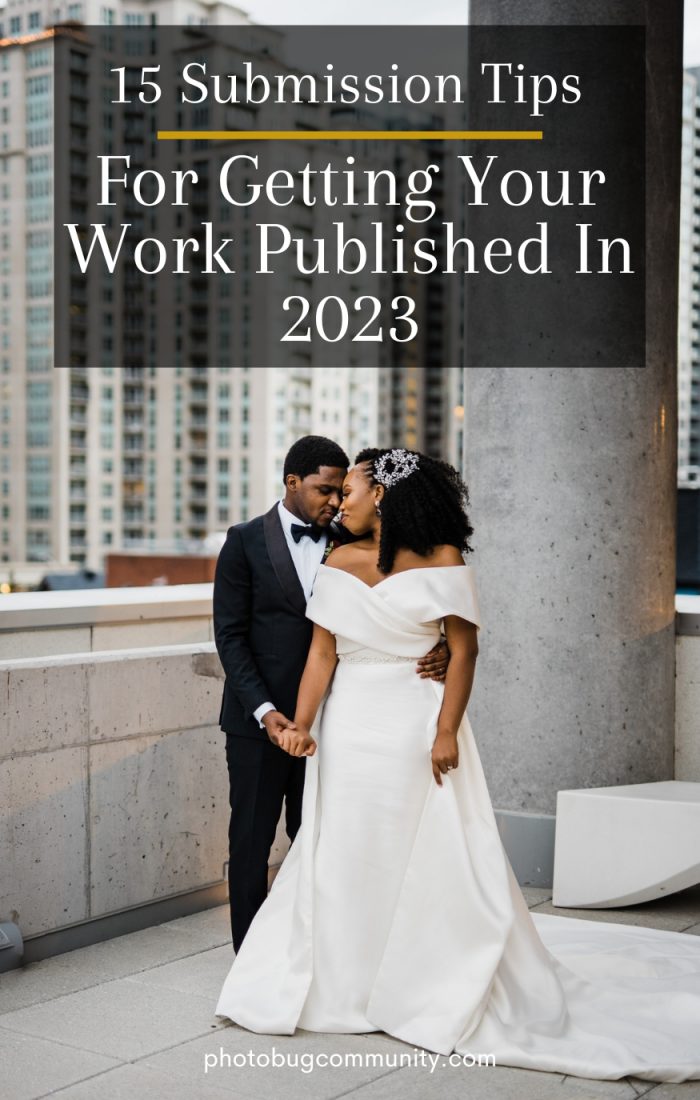
Image by Carley Teresa Photography
That’s a pretty comprehensive list of thing to look out for when making a submission 🙂 Thanks!